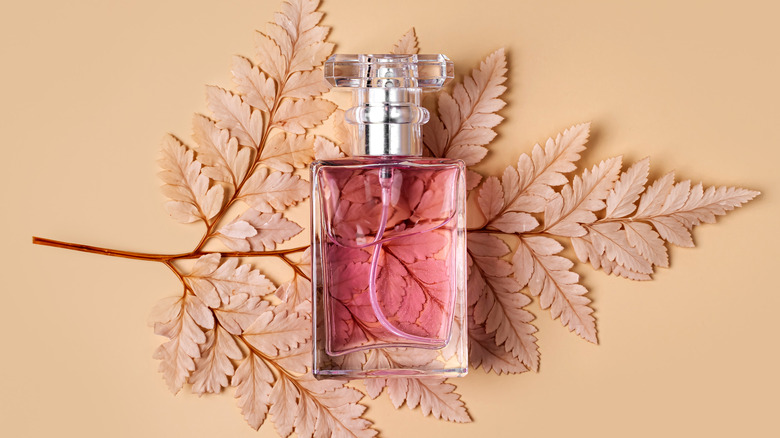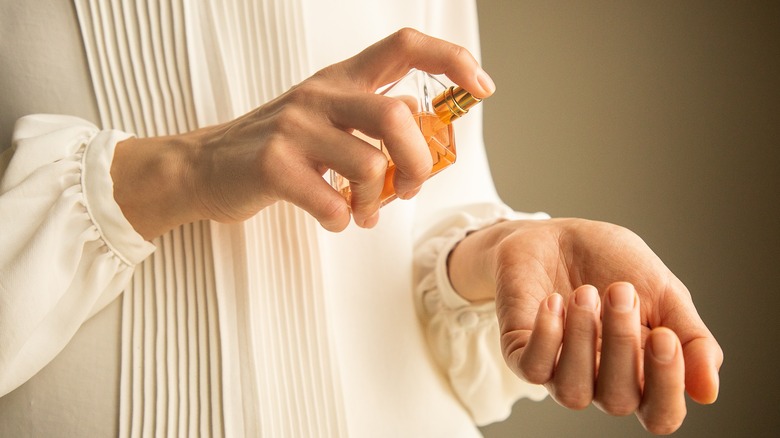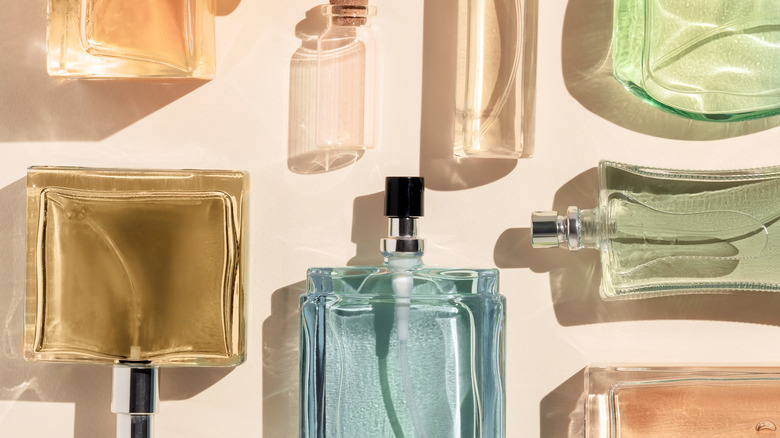How To Layer Your Fragrances And Bring Individuality To Your Signature Scent
We may receive a commission on purchases made from links.
In the world of fragrance and perfumery, certain classics never go out of style. Scents like Flowerbomb, YSL's Black Opium, and, of course, Chanel No. 5, continue to dominate markets and vanities with their familiar yet intoxicating bouquets. And make no mistake, fragrance is big business. In 2020, fragrance raked in $47 billion in revenue, and experts expect that number to hit $66 billion by 2026 (via Statista).
But there is one drawback to gravitating toward popular scents: market saturation. Smelling good is one thing, but smelling like everyone around you kind of undermines the point of selecting a special fragrance. What if you want something more unique? Something that stands out from the crowd? This doesn't necessarily mean you need to go questing in the jungles of obscure perfumes (though you certainly can, and may find some treasures there). To make your favorite mainstream scents work for you, consider fragrance layering.
What is fragrance layering?
First of all, it's important to clear up the concern about having a fragrance that's identical to everyone around you. As you may have heard before, perfume doesn't sit on everyone's skin the same way. Instead, scent interacts with your very biology to create a heady cocktail that's got your own twist.
"We can all smell similarly but not exactly the same, as our skin type, pH balance, hormones, and odors are all different," perfumer Maya Njie tells Byrdie. "We all associate people with their natural smell, the products they use, and their perfume if they wear one. It's the combination of all of these things together that make up their scent."
But sometimes, you may want to push the envelope further and flaunt a fragrance that's truly one-of-a-kind. This is where fragrance layering comes in. True to its name, fragrance layering is simply about combining multiple scents on your skin to create a more complex, unexpected effect. As TheBeauLife observes, layering can add longevity and depth to your fragrance.
When it comes to creating a signature scent, Nije remarks, "I tend to blend perfumes based on experiences, and I think in doing so, it becomes more personal and rather unique." Of course, more than anything else, you want to ensure that the end result smells enchanting. So what are some best practices for combining your perfumes in a harmonious way?
How to pair complementary fragrances
If you're trying to create a cohesive, alluring scent, remember that perfumes aren't the only game in town. Every scented product you apply to your skin will play a hand in your overall fragrance and should be approached thoughtfully.
With this in mind, the experts at Stories Parfums suggest specific steps for beginners to try out fragrance layering. First, select your scents. Certain fragrances will work more naturally together, depending on what kind of vibe you're looking for. Sylvaine Delacourt explains that sweet, vanilla-type scents pair well with something warm and spicy. More fruity fragrances tend to match with florals. You can also enliven a very heavy scent with something fresh, or add mystery and depth by incorporating a perfume heavy with the sensual, musky essence of oud.
Once you've selected a few fragrances that seem to work together, Stories says to start layering by setting the foundation of your scent with bath products like body wash and shampoo. Next, apply any scented lotions you want to incorporate. Then, apply one or more perfumes. Stories recommends applying the most aggressive scent first, then working your way to the most delicate, so that subtle fragrance notes don't get overwhelmed.
In addition to classic perfume sites like the wrists and the hollow of your neck, try layering perfume behind your knees and in the crook of your elbow. This will give your unique symphony of scents more skin contact, so your bespoke new signature fragrance won't go unnoticed!


